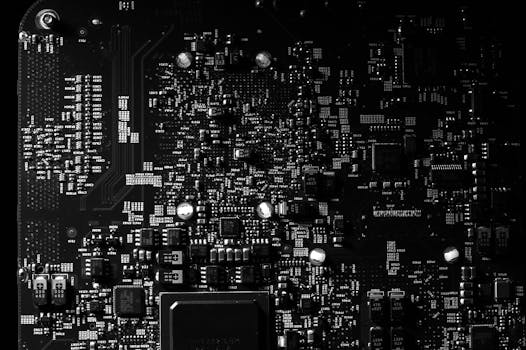PCIe 4.0 vs PCIe 5.0: Should You Upgrade?
9/21/2025 · Motherboards · 6 min

TL;DR
- PCIe 5.0 doubles raw per lane bandwidth compared to PCIe 4.0. That matters most for next generation NVMe SSDs and certain accelerators.
- For most current SSDs and GPUs, PCIe 4.0 is still sufficient. Real world gains with PCIe 5.0 are limited unless you have a device that can saturate the link.
- If you are building new and want more future proofing, choose a platform with PCIe 5.0 support. If you are on a budget or upgrading an older system, PCIe 4.0 remains a great value.
Bandwidth and Latency
- PCIe 4.0 single lane bandwidth: about 2 GBps effective per direction. PCIe 5.0 doubles that to about 4 GBps per lane.
- A x16 GPU slot on PCIe 4.0 offers around 32 GBps effective bandwidth. On PCIe 5.0 it offers about 64 GBps.
- Latency improvements are minor between generations. Bandwidth is the primary advantage of moving to PCIe 5.0.
Which Devices Benefit Most
- NVMe SSDs: Top PCIe 5.0 drives can deliver sequential reads above 12 GBps, which outpaces PCIe 4.0 drives. Storage sees the clearest throughput gains.
- GPUs: Modern gaming GPUs rarely saturate PCIe 4.0 x16 for frame rendering. Professional workloads and specific multi GPU or data heavy passes may see benefits in niche cases.
- Accelerators and NICs: AI accelerators, high end network cards, and storage controllers that need extreme throughput can gain from PCIe 5.0.
Platform Compatibility
- Both the CPU and the motherboard must support PCIe 5.0 to reach full speed. Newer desktop platforms increasingly include PCIe 5.0 lanes, but support can be partial.
- Backward compatibility is supported: PCIe 5.0 devices can operate in PCIe 4.0 slots at reduced speed and PCIe 4.0 devices can run in PCIe 5.0 slots.
- Check lane allocation and chipset limits. On some boards, only specific expansion slots or M.2 connectors run at full PCIe 5.0 speed.
Cooling and Power Considerations
- PCIe 5.0 NVMe SSDs and some accelerators can run hotter due to higher performance. Good heatsinks and airflow are recommended for sustained workloads.
- Higher speed devices may draw more power. Verify that your power supply and motherboard power delivery are adequate when adding high performance cards.
Real World Impact
- For game load times, boot times, and most everyday desktop tasks, the difference between PCIe 4.0 and 5.0 is often small with current hardware.
- Workstation tasks like video editing, large data set transfers, database operations, and specialized compute can see meaningful improvements when storage or cards can use the extra bandwidth.
Upgrade Path
- If you plan to keep a system for many years and want compatibility with future high speed NVMe drives and accelerators, choosing a PCIe 5.0 capable motherboard and CPU makes sense when budget allows.
- If you already own a fast PCIe 4.0 NVMe and a modern GPU, you can safely wait until PCIe 5.0 devices are more mainstream before upgrading.
Buying Checklist
- Confirm CPU and motherboard PCIe version and which slots or M.2 connectors support full speed.
- For NVMe, check drive thermal solution and whether your case provides M.2 cooling or space for heatsinks.
- Consider whether your workload actually needs more bandwidth or if storage capacity and price per GB matter more.
- Account for future expansion like add in cards, multiple NVMe drives, or high speed NICs when choosing a board.
Bottom Line
PCIe 5.0 doubles raw bandwidth and brings clear benefits for bleeding edge NVMe storage and certain specialized cards. For most users in 2025, PCIe 4.0 still delivers excellent performance and value. Pick PCIe 5.0 if you want extra future proofing and plan to use devices that can exploit the additional bandwidth.
Found this helpful? Check our curated picks on the home page.